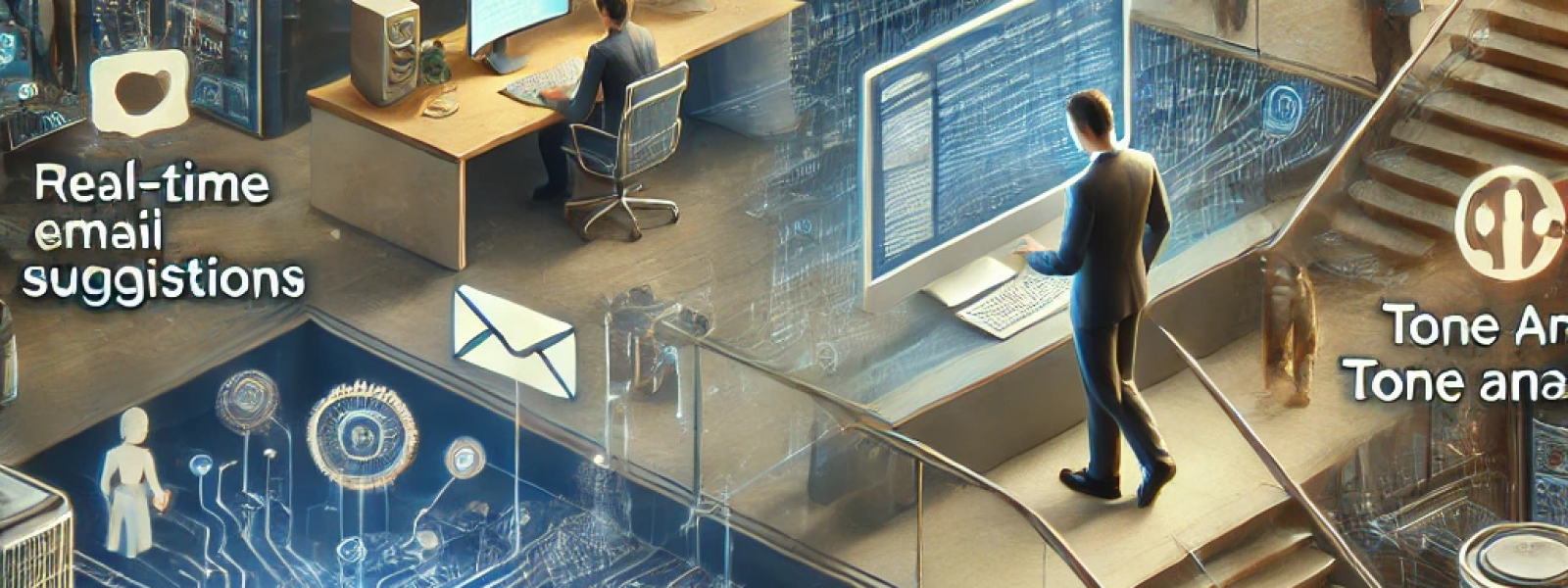Artificial Intelligence (AI) is no longer a single-purpose tool limited to automating repetitive tasks. In today’s dynamic business environment, successful AI integration is multi-dimensional, seamlessly embedded into various layers of existing processes and technologies. This depth of integration allows AI to provide real-time assistance across a wide range of activities, from offering suggestions as you type an email to analyzing the tone based on the intent of the communication. Often, these capabilities work in the background, unnoticed, as we rush to complete our daily tasks. In this post, we’ll delve into how AI’s layered integration is reshaping the way we work, enhancing productivity, and enabling smarter decision-making.
The Multi-Dimensional Nature of AI Integration
1. Real-Time Assistance and Suggestions
Imagine typing an email to a client. As you compose your message, AI tools analyze previous conversations with that client, suggesting phrases or topics that align with past interactions. Additionally, the AI can assess the email’s tone, ensuring it matches the intended mood—be it formal, friendly, or persuasive. This level of real-time support allows professionals to craft more effective and contextually appropriate communications without spending extra time deliberating over each word.
2. Seamless Integration with Existing Technologies
AI’s multi-dimensional integration means that it doesn’t operate in isolation; it works in concert with existing business systems and technologies. For instance, as you update a customer’s profile in a CRM system, AI might pull in data from social media, previous purchases, and customer service interactions to give you a complete view of that customer. This allows for more personalized service and better-informed decisions, all while the AI operates silently in the background.
AI Enhancing Human Capabilities
1. Layered Intelligence Across Tasks
AI’s integration is not just about single-task automation—it’s about layering intelligence across various tasks. Whether it’s optimizing your workflow by suggesting the next best action or predicting outcomes based on historical data, AI is there to guide you through the complexities of modern business operations. This layered approach means that AI isn’t just a tool; it’s a collaborative partner enhancing your capabilities at every step.
2. Reducing Cognitive Load
One of the often-overlooked benefits of AI integration is its ability to reduce cognitive load. By handling routine tasks and providing intelligent suggestions, AI frees up mental bandwidth, allowing you to focus on more strategic and creative aspects of your work. For example, while AI manages scheduling, follow-up reminders, and data entry, you can devote your attention to solving complex problems or brainstorming innovative ideas.
Real-World Applications of Multi-Dimensional AI Integration
1. Email Communication
In many businesses, email remains a critical communication tool. AI integration can enhance this by offering real-time grammar corrections, tone adjustments, and content suggestions based on previous interactions. This not only improves the quality of communication but also ensures consistency in messaging across the organization.
2. Customer Relationship Management (CRM)
AI-enhanced CRMs are becoming increasingly common, where AI provides insights into customer behavior, predicts future actions, and even suggests personalized marketing strategies. This deep integration ensures that every customer interaction is informed, targeted, and effective.
Conclusion
AI integration is far from being a two-dimensional add-on to existing systems. Instead, it’s a multi-dimensional force that enhances every layer of business operations, from communication and customer service to strategic decision-making. By embedding itself into various processes and technologies, AI provides real-time, intelligent support that helps professionals work smarter, not harder. As AI continues to evolve, its integration will become even more seamless, making it an indispensable partner in the modern workplace.

